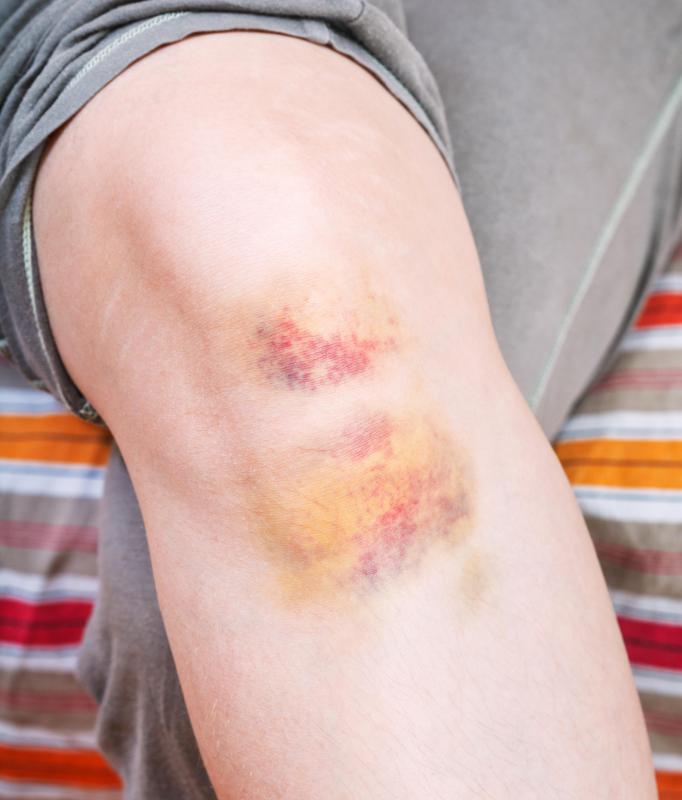At WiseGEEK, we're committed to delivering accurate, trustworthy information. Our expert-authored content is rigorously fact-checked and sourced from credible authorities. Discover how we uphold the highest standards in providing you with reliable knowledge.
What is the Synovium?
The synovium, or synovial membrane, is a soft tissue that lines the surfaces of synovial joints, or joints with cavities. Some joints that feature a synovium are the wrist, elbow, shoulder, hip, and knee. The word synovium is derived from the Latin for "egg", because the synovial fluid inside the joint has the consistency and appearance of egg white. The tendons in the hand and foot have a similar structure to the synovial membrane, called the synovial sheath.
Though there is variation between different types of synovium, the tissue usually has two layers, the intima and the subintima. The subintima is the outer layer, which can consist of a variety of connective tissue types, from fatty to fibrous to loose alveolar. The intima, or inner layer, consists of an extremely thin sheet of cells. The synovial membrane serves to contain and protect the cushioning and lubricating synovial fluid, which is essential to the proper functioning of joints.

There are two types of cells present in the intima of the synovium, fibroblasts and macrophages. The synovial fibroblasts produce two important substances for the synovial fluid, hyaluronan and lubricin. Hyaluronan is a long-chain sugar polymer that gives the synovial fluid its egg-white-like consistency, and helps keep it in place within the joint. Lubricin keeps the joint lubricated to promote movement and prevent injury. The macrophages are a type of white blood cell that engulf and destroy unwanted particles in the synovial fluid.

Depending upon the joint in question, the surface of the intima may be smooth or covered with villi, tiny hair-like projections that allow the synovium to change shape as the joint moves. Underneath the intima is a dense network of capillaries, or tiny blood vessels, that keep the synovial membrane and the cartilage inside the joint supplied with nutrients.

In medical conditions including rheumatoid arthritis, the synovium can thicken and become irritated, causing joint malfunction and damage. An irritated synovial membrane can produce too much synovial fluid, making it difficult for nutrients to reach the cartilage, or it can absorb too many nutrients itself, similarly leading to malnourishment of other parts of the joint. Finally, a damaged synovial membrane can produce enzymes that destroy the cartilage.
AS FEATURED ON:
AS FEATURED ON:















Discuss this Article
Post your comments